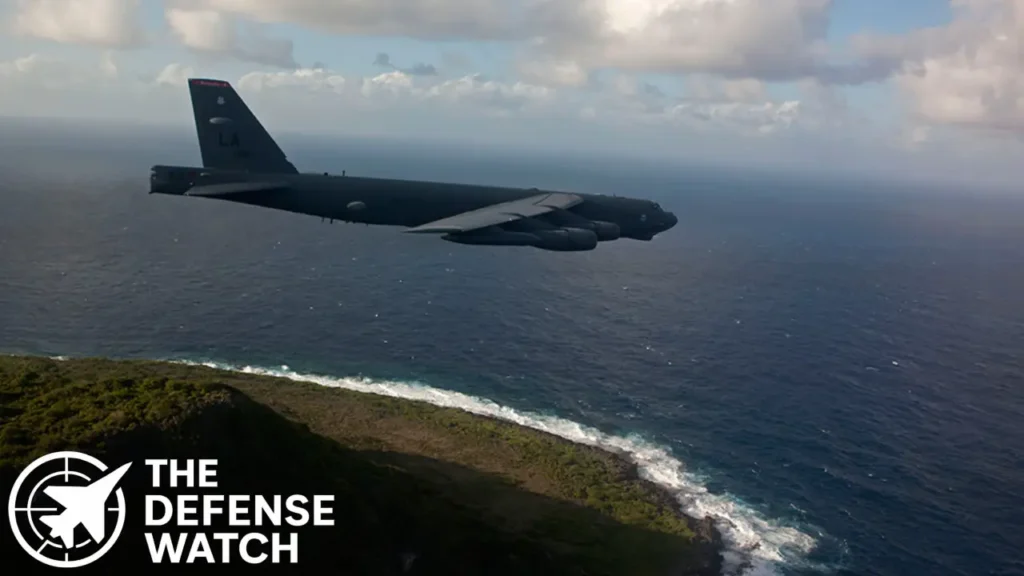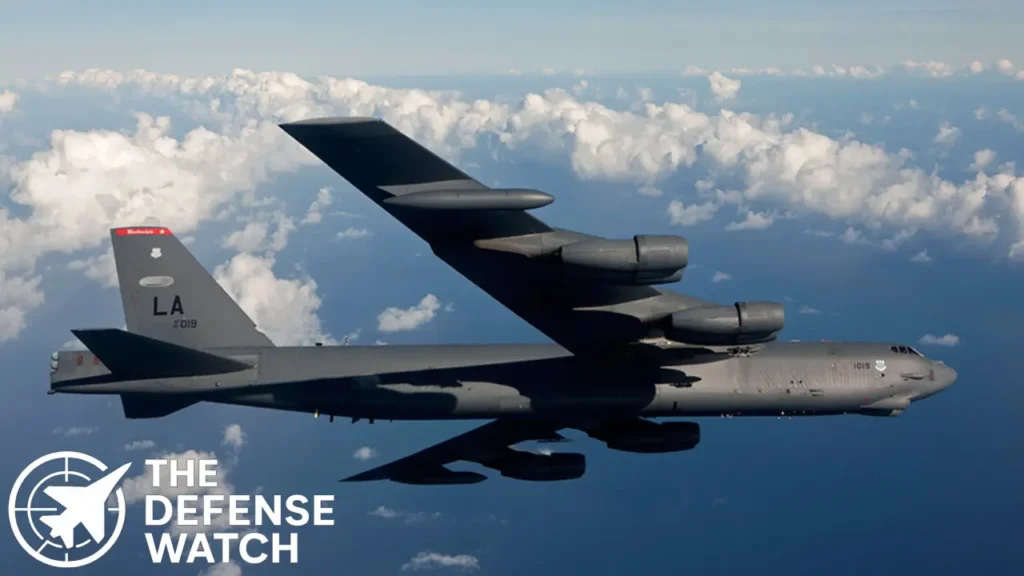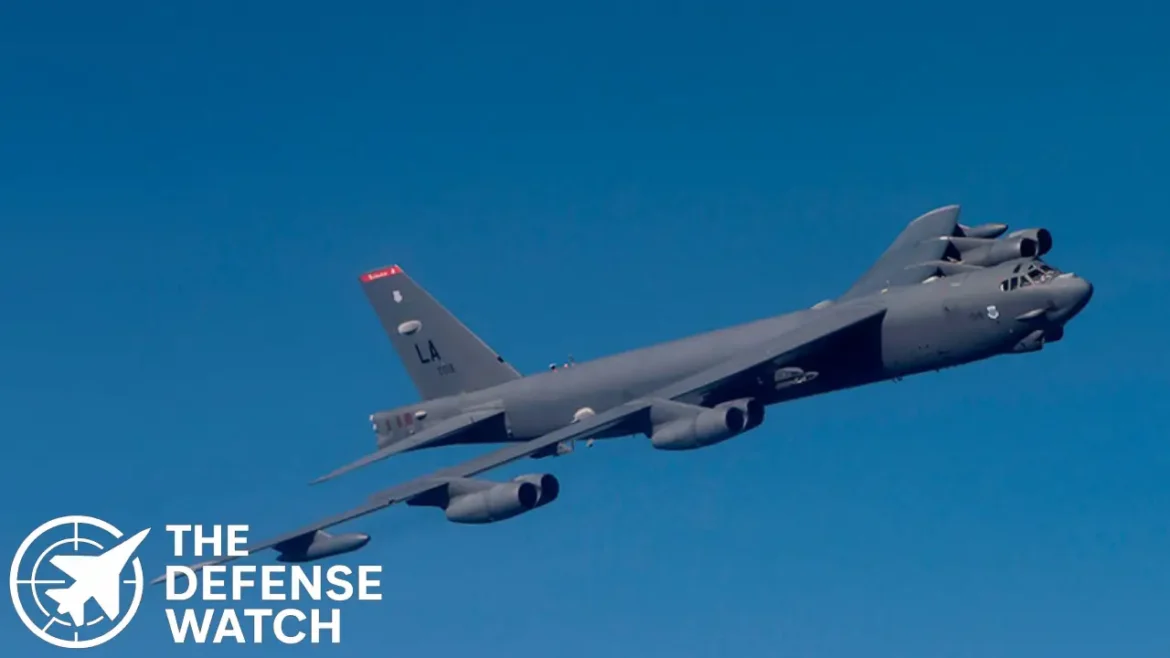The Boeing B-52 Stratofortress, America’s enduring heavy bomber, recently celebrated 70 years of service with the U.S. Air Force. As the venerable aircraft continues to project strategic deterrence, its modernization programs—particularly radar and engine upgrades—are entering pivotal phases, albeit with notable delays.
This article examines the B-52’s continued relevance, the status of its upgrades, and the implications for its future service into the 2050s.
A Legacy of Strategic Reach
Introduced in 1955, the B-52 has remained a cornerstone of the Air Force’s long-range strike and nuclear capabilities. As of 2025, roughly 72 aircraft remain active, supported by others in storage.
Known for its large payload, long endurance, and cost-effectiveness, the Stratofortress continues to embody “peace through strength”
Radar Modernization Nears Flight Testing
The Radar Modernization Program (RMP)—which will equip B-52s with the advanced AN/APQ-188 AESA radar, improves detection, resistance to jamming, and multifunction capability. After years of schedule slips and cost growth, this milestone is now expected to enter flight testing soon.

Originally targeting operational capability as early as 2027, the delays now push debut to 2028–2030.. Factors include integration challenges, environmental qualification setbacks, and Nunn-McCurdy cost breach reviews.
Engine Upgrade—Re-Engining Setbacks Continue
The Commercial Engine Replacement Program (CERP) aims to replace aging TF33 engines with modern Rolls-Royce F130 units—transforming the fleet into “B-52J” variants. However, design issues with the engine inlets have delayed progress. After digital redesign efforts, wind-tunnel testing is ongoing, and the new configuration is expected to be validated by 202.
The critical design review and initial production decision have both slipped – now anticipated for March 2028, three years behind initial plans.

Role and Relevance into the 2050s
Despite modernization challenges, the B-52 remains slated to serve through the 2050s, thanks to incremental upgrades to radar, engines, avionics, and structural systems..
Its adaptability—integrating modern standoff weapons including hypersonic missiles—and robust logistics footprint make it a cost-effective workhorse well beyond its original design life.
Analysis and Context
- The B-52’s longevity underscores the U.S. Air Force’s strategy of extending proven platforms through modernization rather than costly replacements.
- The delays in critical upgrades highlight persistent challenges in modernizing legacy aircraft—especially in retrofitting advanced systems into Cold War-era designs. Yet, the commitment to keep the B-52 viable well into the 2050s reflects its unmatched payload, range, and flexibility in strategic deterrence.
FAQs
Its large payload, long range, dual nuclear/conventional capability, and cost-effective upgrades enable continued strategic utility far beyond its original life expectancy.
The AESA radar will enhance target acquisition, resolution, ground-moving-target indication, synthetic aperture radar modes, and electronic warfare resistance.
Initial testing continues. The critical engine inlet redesign testing is set to conclude by 2026, with initial production slated for around 2028.
The bomber is planned to remain in service through the 2050s, supported by ongoing modernization across avionics, weapons payloads, engines, and radar systems.
With upgrades enabling advanced standoff weapons and improved situational awareness, the B-52 will continue to serve in long-range strike, deterrence, and allied operations, complementing newer stealth bombers like the B-21.


6 comments
[…] test, officially designated Flight Test Other-26a (FTX-26a), featured an air-launched target over the northern Pacific Ocean, flying more […]
[…] Long-range strike / stand-off capability […]
[…] delays and cancellations have pushed back original deployment goals. For instance, a planned flight test in late FY2022/early FY2023 was delayed to allow for analysis of failures from prior […]
[…] equipment to Ukraine. The Indo-Pacific theater is also driving orders for air defense systems, long-range strike weapons, and naval platforms. According to the Stockholm International Peace Research Institute, […]
[…] Kupol personnel in assembly and technical training. They also traveled to Chebarkul to oversee flight tests and provide […]
[…] of the U.S.’ more visible steps has been the test flights of the Talon-A reusable hypersonic test aircraft (developed by Stratolaunch and Ursa Major). The […]